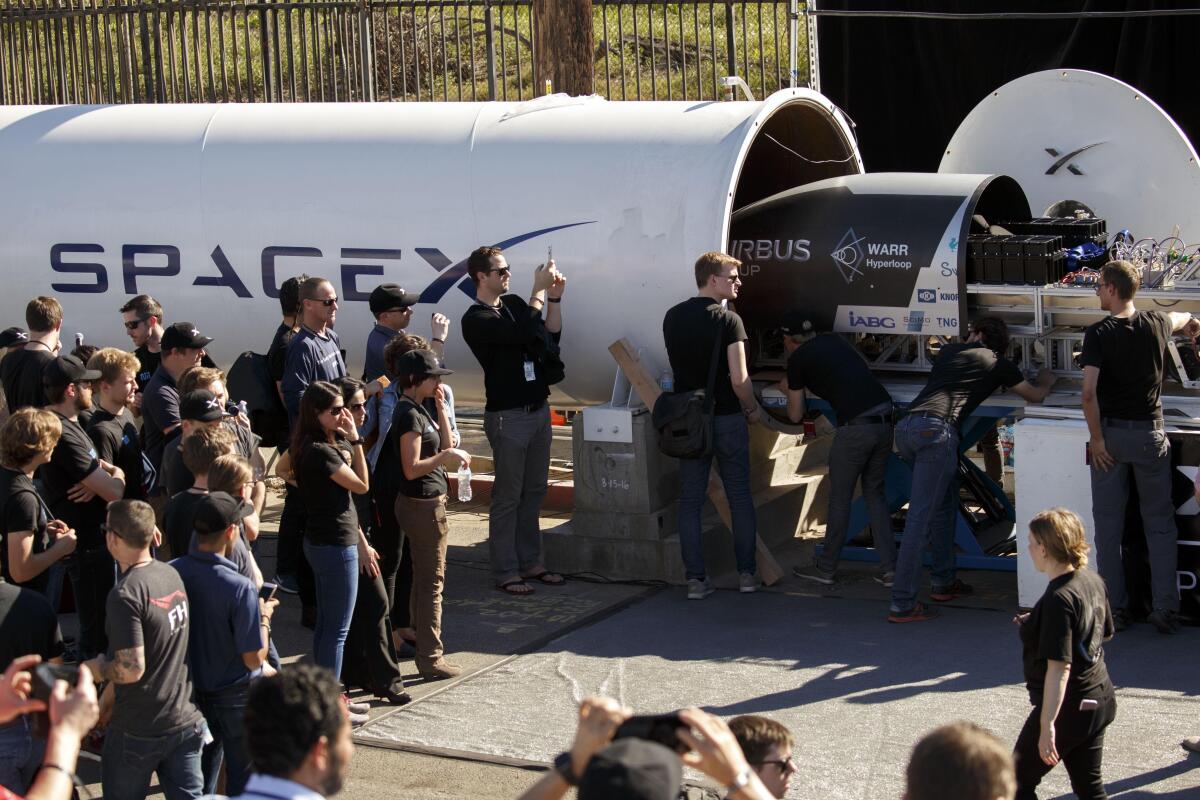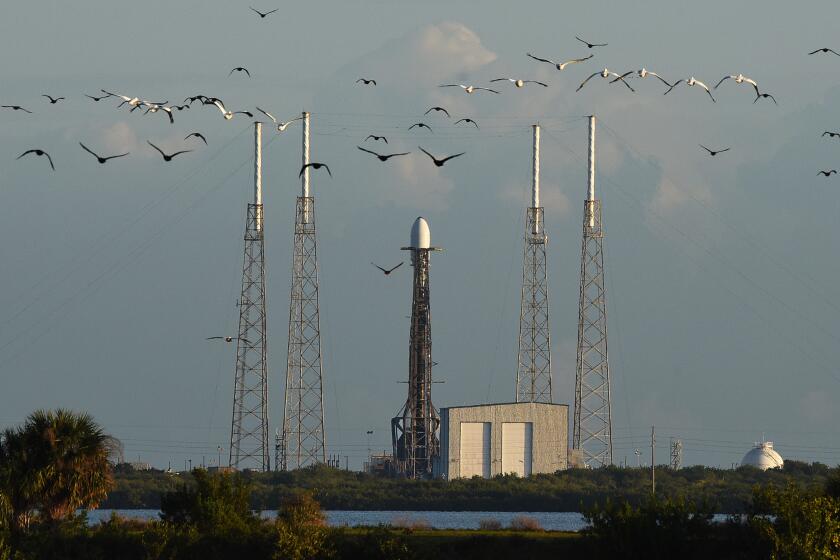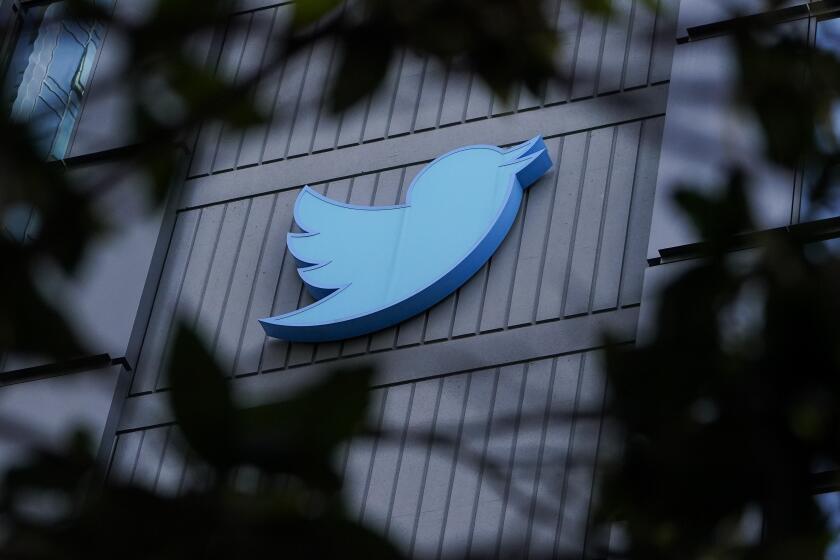Elon Musk’s Hyperloop prototype tube is gone. What does it mean for his tunneling dream?

- Share via
Six years ago, SpaceX installed an above-ground tube in front of its Hawthorne headquarters, drawing excitement and intrigue from around the city about Chief Executive Elon Musk’s latest experiment.
At annual competitions, engineers and students from across the globe sought to develop and test Musk’s proposed Hyperloop transportation technology, which promised to hurl passengers through tunnels in levitating, autonomous electric pods at more than 600 mph, cutting a trip from Los Angeles to San Francisco to 35 minutes.
Today, there is no Hyperloop system in service. And after sitting idle for several years, the tube on Jack Northrop Avenue — which drew complaints about road and pedestrian access, as well as questions of its purpose — has been removed, at the city’s request.
“The city has been very giving and has been very supportive in efforts that SpaceX has had,” said Hawthorne Councilmember Angie Reyes English, who asked city staff to request that SpaceX remove the tube. “But ultimately, we have other businesses and other things we need to consider, and to give the community their streets back.”
A SpaceX employee was hospitalized for a fractured skull and put in a coma for two months after performing a check on an engine and getting hit in the head, according to OSHA.
It remains unclear whether SpaceX or Musk’s tunneling venture, Boring Co., are continuing to develop the Hyperloop technology. Bloomberg, which first reported the Hawthorne tube’s removal this week, called it “symbolic of a larger retreat” and said the Hyperloop project “has been indefinitely shelved.”
Representatives for SpaceX and Boring Co. did not respond to requests for comment.
After the last student competition in the summer of 2019, SpaceX seemingly abandoned operations at the nearly milelong test tube, which collected dust and debris from nearby railroad tracks, as well as pine needles from trees that hadn’t been trimmed in years due to lack of access, Reyes English said.
The tube took up an eastbound lane heading toward Crenshaw Boulevard, complicating existing concerns in the busy area about traffic congestion, drivers traveling at freeway speeds and pedestrian safety.
In 2017, SpaceX built a pedestrian bridge connecting its offices to a parking structure after employees were struck by vehicles while walking across Crenshaw Boulevard, according to a Daily Breeze report. The city supported the project, Reyes English said.
Alex Estrada, a manager at Tow World on Jack Northrop Avenue, said he began to worry about pedestrians who were forced to walk along the street because of the tube.
“It pretty much got in everybody’s way,” he said.
After the SpaceX competitions ceased, he and others began to question why the tube remained.
“I assumed they forgot about it, or just left it there,” Estrada said.
After the tube’s removal, a leftover barricade and some plastic cones remained, obstructing a lane on Jack Northrop. A patch of asphalt that runs along the tracks has been turned into a parking lot, which the city has not approved, Reyes English said.
The council member plans to seek the removal of the barricades and said she will look at options for parking enforcement at the unsanctioned lot.
“We just have to clean it up to ensure its safety and to ensure pedestrian right of way,” Reyes English said.
Musk also intends to reverse the company’s existing work-from-anywhere policy, asking remaining employees to report to offices — though some exceptions could be made, sources said.
Reyes English said she has had a close working relationship with SpaceX and Boring Co., pointing to the jobs created and boost to the local economy.
When Boring Co. sought to construct a separate milelong tunnel beneath a Hawthorne neighborhood to test its underground autonomous vehicles, Reyes English, along with the rest of the council, approved the project. But she pushed the company to conduct more outreach to the community to inform residents of the project, which was unveiled in late 2018.
Now, with the above-ground tube gone, Reyes English and others in City Hall are turning their attention to the underground tunnel, which runs along 120th Street.
Given Musk’s history of shelving tunnel projects, Reyes English is not sure whether the Hawthorne project is still running, she said.
Boring Co. representatives told City Atty. Robert Kim as recently as this summer that the company was using the tunnel for development and research. It is required to backfill the tunnel with concrete as soon as the project concludes, Kim said.
Musk previously dropped plans to build a tunnel beneath Sepulveda Boulevard on the Westside in 2018 after a lawsuit alleged that the city of Los Angeles violated state law when it sought to exempt the tunnel from environmental review.
More recently, Musk backed out of a tunnel project that would have transported riders from the Rancho Cucamonga Metrolink station to Ontario International Airport. San Bernardino County transit officials plan to carry on the project without him.
Boring Co. is committed to finishing tunnel and loop projects in Las Vegas, according to its website, including one that would transport people to the city’s convention center.
In Hawthorne, Reyes English has noticed a lack of activity at the entrance and exits of the underground Boring Co. tunnel. She plans to seek a tour of the site to ensure its operation.
More to Read
Sign up for Essential California
The most important California stories and recommendations in your inbox every morning.
You may occasionally receive promotional content from the Los Angeles Times.













